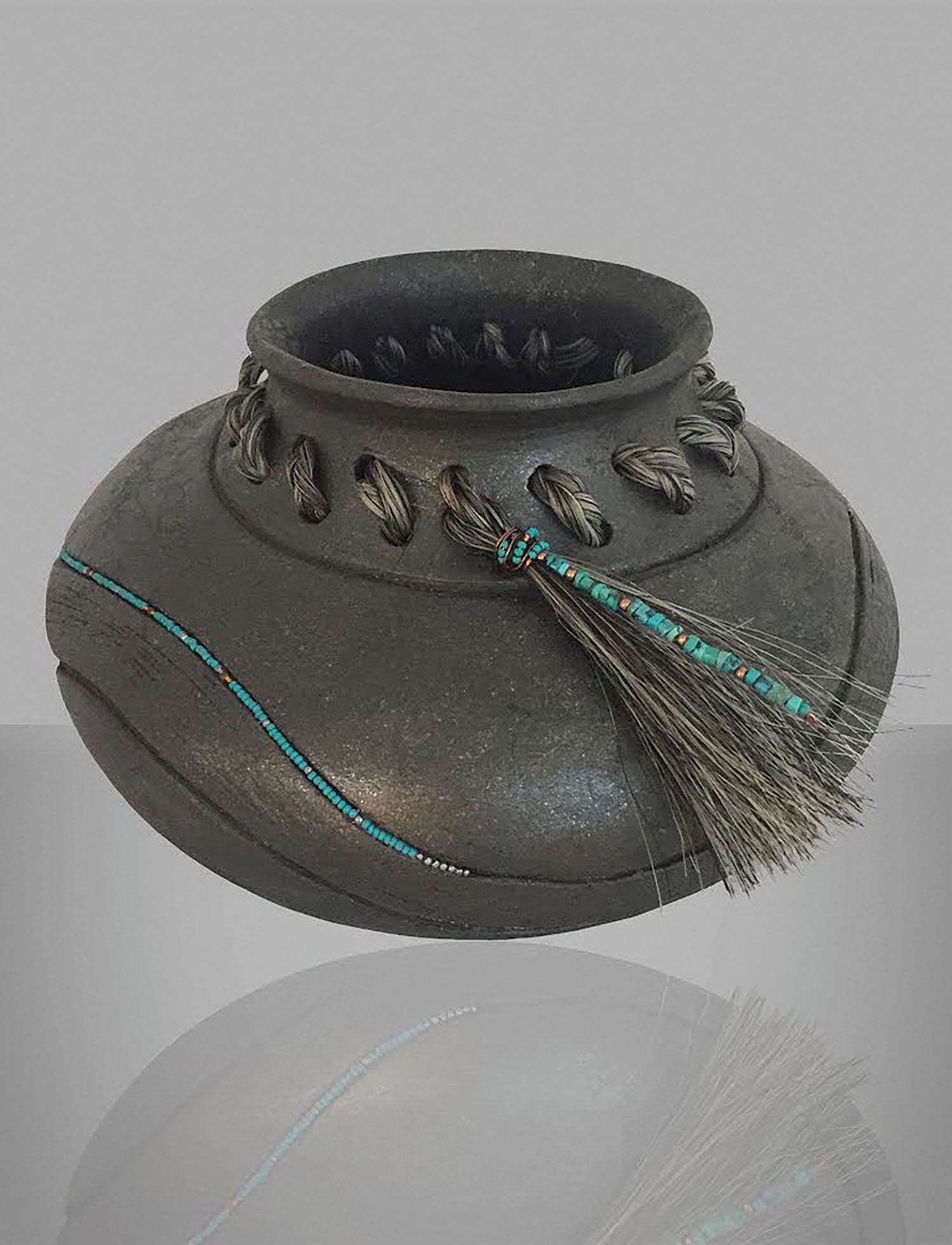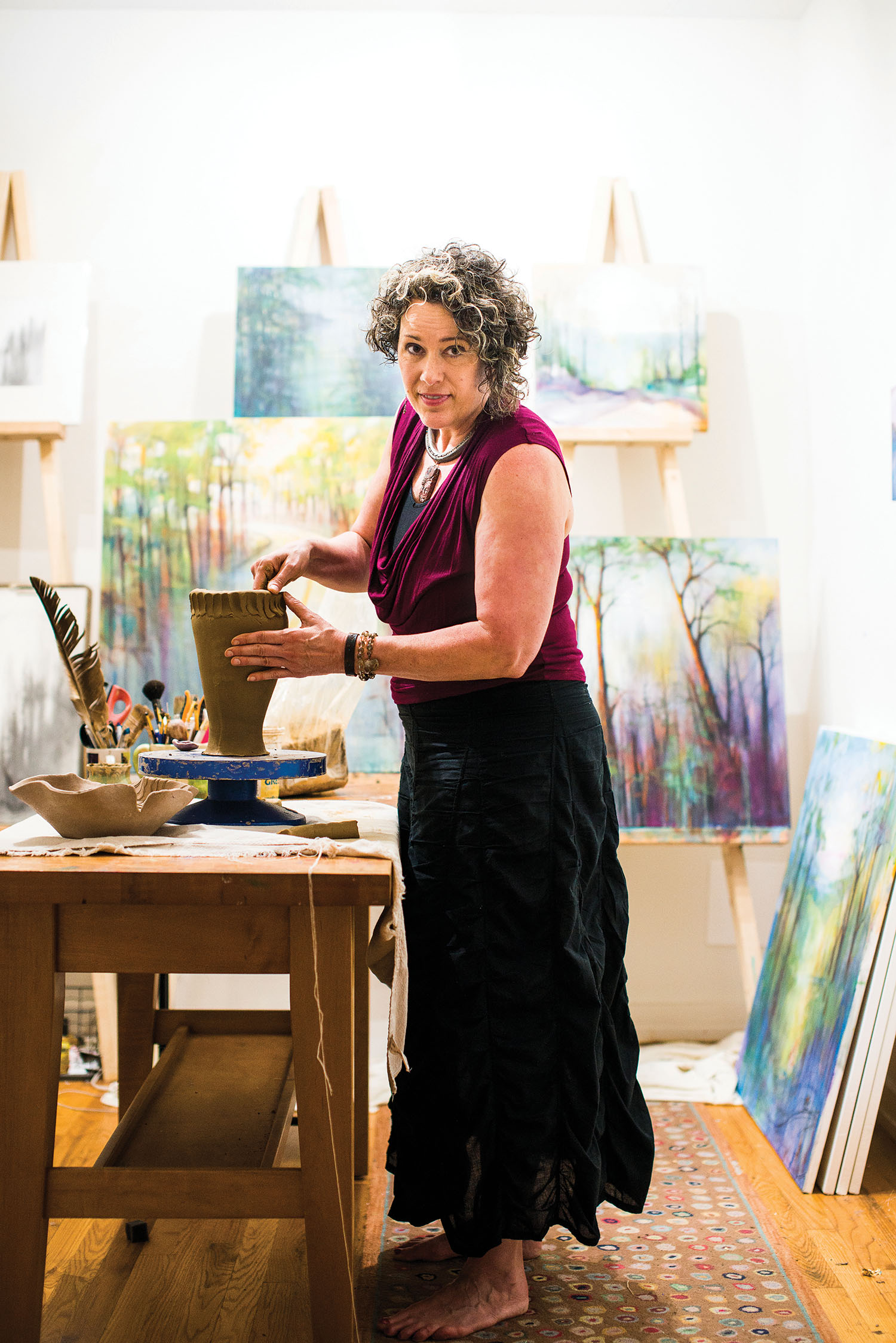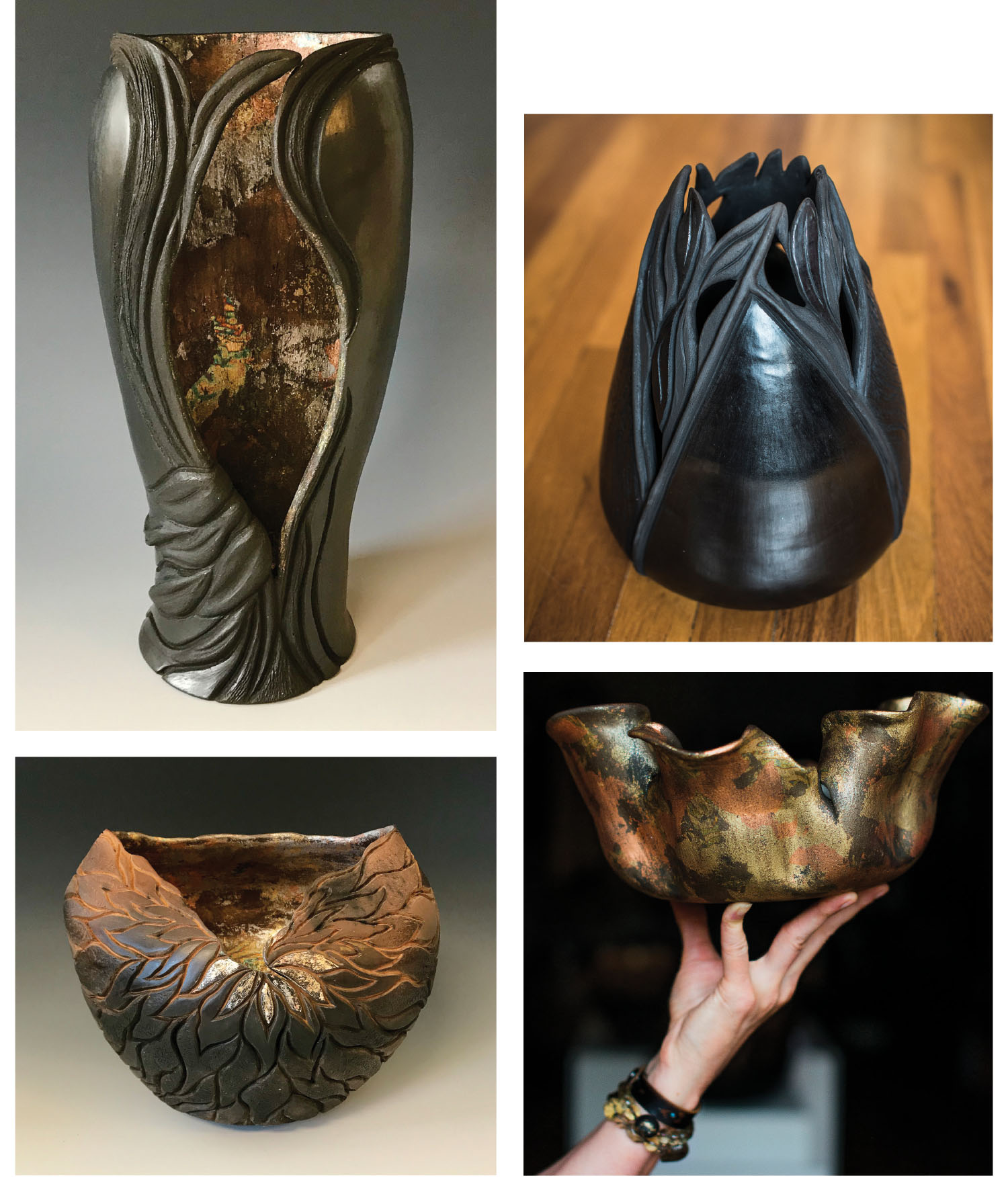 After a career as a massage therapist, Lucy Clark touched clay for the first time at age 45. And that was it. “Clay is very similar to muscle tissue in how it moves under your hands,” says Clark. “That sensitivity I gained in all those years from working on people transferred.”
After a career as a massage therapist, Lucy Clark touched clay for the first time at age 45. And that was it. “Clay is very similar to muscle tissue in how it moves under your hands,” says Clark. “That sensitivity I gained in all those years from working on people transferred.”
It’s hard to believe that Clark’s journey in the medium started only a decade ago. She says handbuilding called to her, and that it was a critical calling that could not be denied. This technique allows the unexpected curves, folds, and flourishes that define her vessels, and welcomes her to spend more time shaping and burnishing the clay.
For Clark, it’s a contemplative practice — not only a conversation with the medium, but a communion with those who have practiced the technique across generations and cultures. She speaks with passion about her time at Ghost Ranch in New Mexico, both as a student and teacher. It’s here that she perfected her use of Pueblo handbuilding techniques and met some of the greats, and it is there, in what is also Georgia O’Keeffe territory, where she says, “the veil is the thinnest.”

Clark builds each pot out of clay with shimmery mica in it (micaceous clay is indigenous to the Manzano Mountains in New Mexico). She may use a slip with mica dust, too. As the pieces dry, she often burnishes them with quartz stone, sometimes for hours. After firing, she dons gloves, removes the vessels while they’re still over 1,000 degrees, and nestles them in beds of sawdust. Then they seem to come alive, emitting plumes of smoke as they take on deep shades ranging from onyx to umber to dusky reds. Some areas glint; others are muted.
At this point, Clark continues to work the pots, adding stones or painting metallic foils where one can just catch a glimpse, like a small treasure. As Clark describes them, “I wanted those pieces to look like I had just unearthed them, like they had been underground for hundreds of years.”
Her vessels respond best, she says, when she guides them, rather than trying to control them. “The second I push something, whether it’s me, my life, my husband, or my clay, when I put too much force — too much will — it collapses. The clay does it literally.”
And yet lately, Clark is expanding her range. She now does jewelry, mostly bold “power pendants” composed of micaceous clay and semi-precious stones. She’s also making flowing, free-form wall installations that carry enough drama to anchor a room.
No matter the shape or scope, Clark insists on the importance of “no hard edges” in anything she creates. “Everything I do has a rounded form or a soft unfolding. This world can be so hard on us, and I just want people to look at my work and let it calm them.”

Bottom Left: Spirit Horse – Coil built, smoked micaceous clay with inlaid turquoise and horsehair
Top Right: Dipping toward Stardust – Coil built, smoked micaceous clay with mixed-metal leaf
Bottom Right: Inner Glow – Coil built, smoked Earthenware clay with mixed-metal leaf
Lucy Clark, Artists @ Work Studio and Gallery, 51 W. Main St., Brevard. For more information, call 828-577-2719 or see lucyclarkpottery.com. Clark and painter Cathryn Cooper will be doing live demonstrations at Artists @ Work from Wednesday through Saturday of American Craft Week, October 10-13. Lucy Clark also shows at the Gallery at Flat Rock (2702-A Greenville Hwy., Flat Rock, 828-698-7000; galleryflatrock.com). She will participate in a group show, “Cross Pollination,” at the NC Arboretum starting in January 2019; see ncarboretum.org.